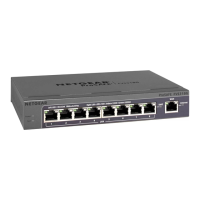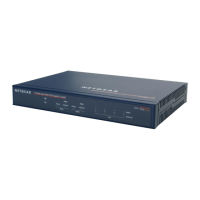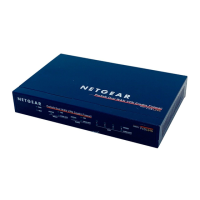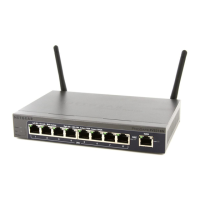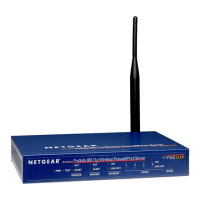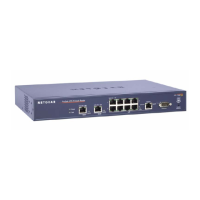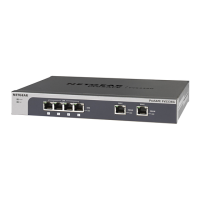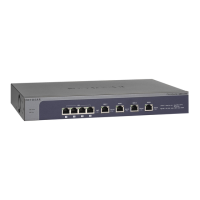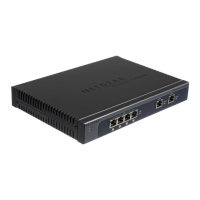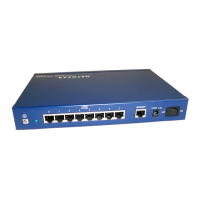Network and System Management
411
ProSecure Unified Threat Management (UTM) Appliance
Port Triggering
Port triggering allows some applications running on a LAN network to be available to external
applications that would otherwise be partially blocked by the firewall. Using the port-triggering
feature requires that you know the port numbers used by the application. Without port
triggering, the response from the external application would be treated as a new connection
request rather than a response to a request from the LAN network. As such, it would be
handled in accordance with the inbound port-forwarding rules, and most likely would be
blocked.
For the procedure on how to configure port triggering, see Configure Port Triggering on
page 174.
Configure the DMZ Port
The demilitarized zone (DMZ) is a network that, by default, has fewer firewall restrictions
when compared to the LAN. The DMZ can be used to host servers (such as a web server,
FTP server, or email server) and provide public access to them. On the UTM5, UTM10,
UTM25, and UTM150, LAN port 4 can be dedicated as a hardware DMZ port to safely
provide services to the Internet without compromising security on your LAN. On the UTM50,
LAN port 6 can be dedicated as a hardware DMZ port. By default, the DMZ port and both
inbound and outbound DMZ traffic are disabled. Enabling the DMZ port and allowing traffic to
and from the DMZ increases the traffic through the WAN ports.
For information about how to enable the DMZ port, see Configure and Enable the DMZ Port
on page 111. For the procedures about how to configure DMZ traffic rules, see Set DMZ
WAN Rules on page 134.
Configure Exposed Hosts
Specifying an exposed host allows you to set up a computer or server that is available to
anyone on the Internet for services that you have not yet defined. For an example of how to
set up an exposed host, see LAN WAN or DMZ WAN Inbound Rule: Specify an Exposed
Host on page 143.
Configure VPN Tunnels
The UTM supports site-to-site IPSec VPN tunnels and dedicated SSL VPN tunnels. Each
tunnel requires extensive processing for encryption and authentication, thereby increasing
traffic through the WAN ports.
For information about IPSec VPN tunnels, see Chapter 7, Virtual Private Networking
Using IPSec Connections. For information about SSL VPN tunnels, see Chapter 8, Virtual
Private Networking Using SSL Connections.
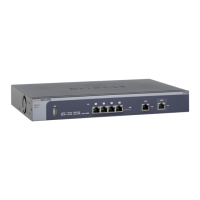
